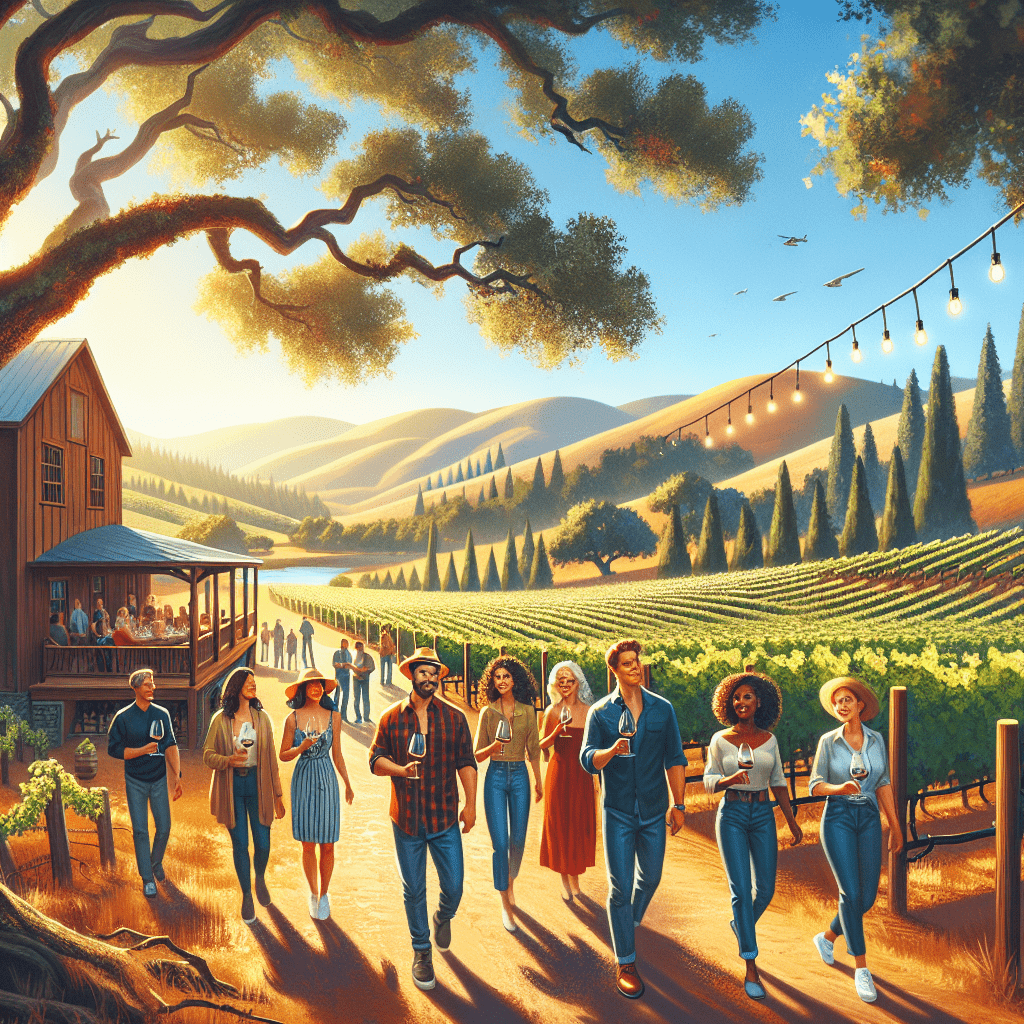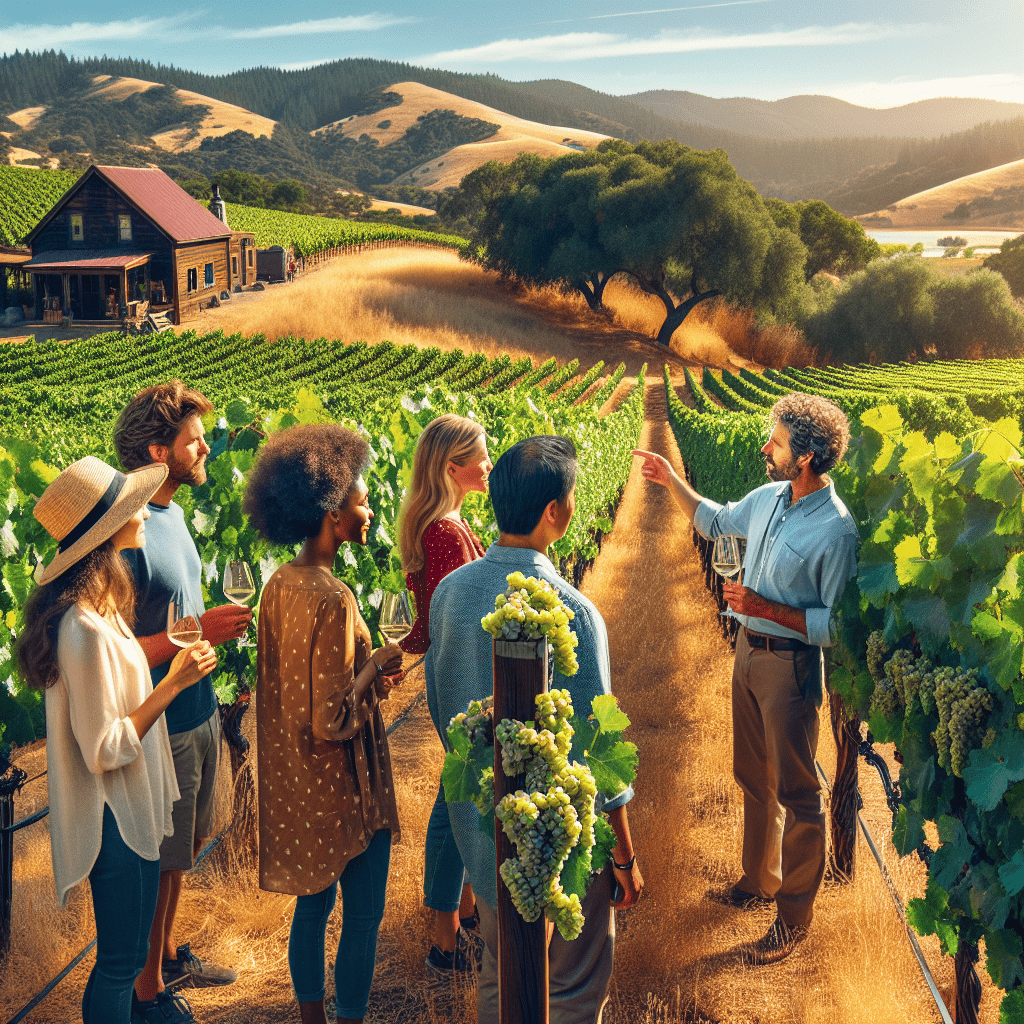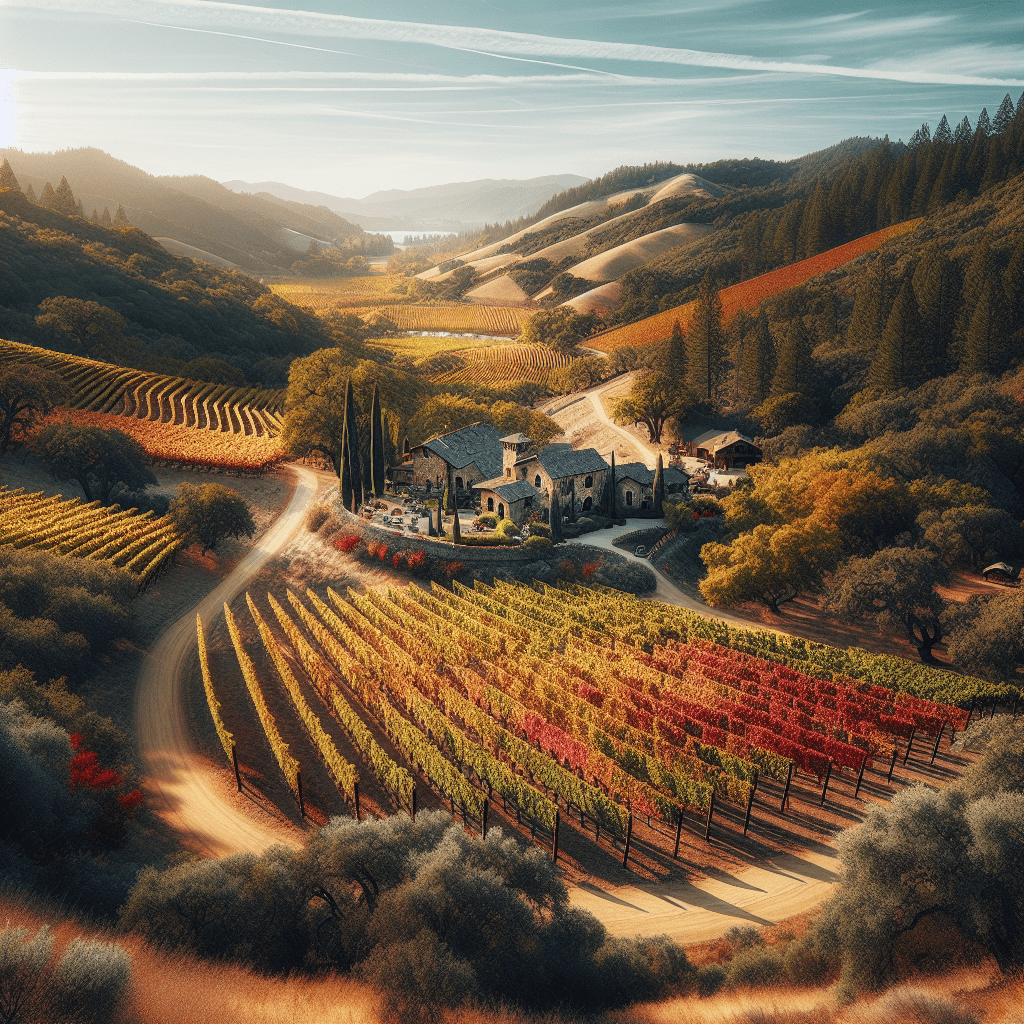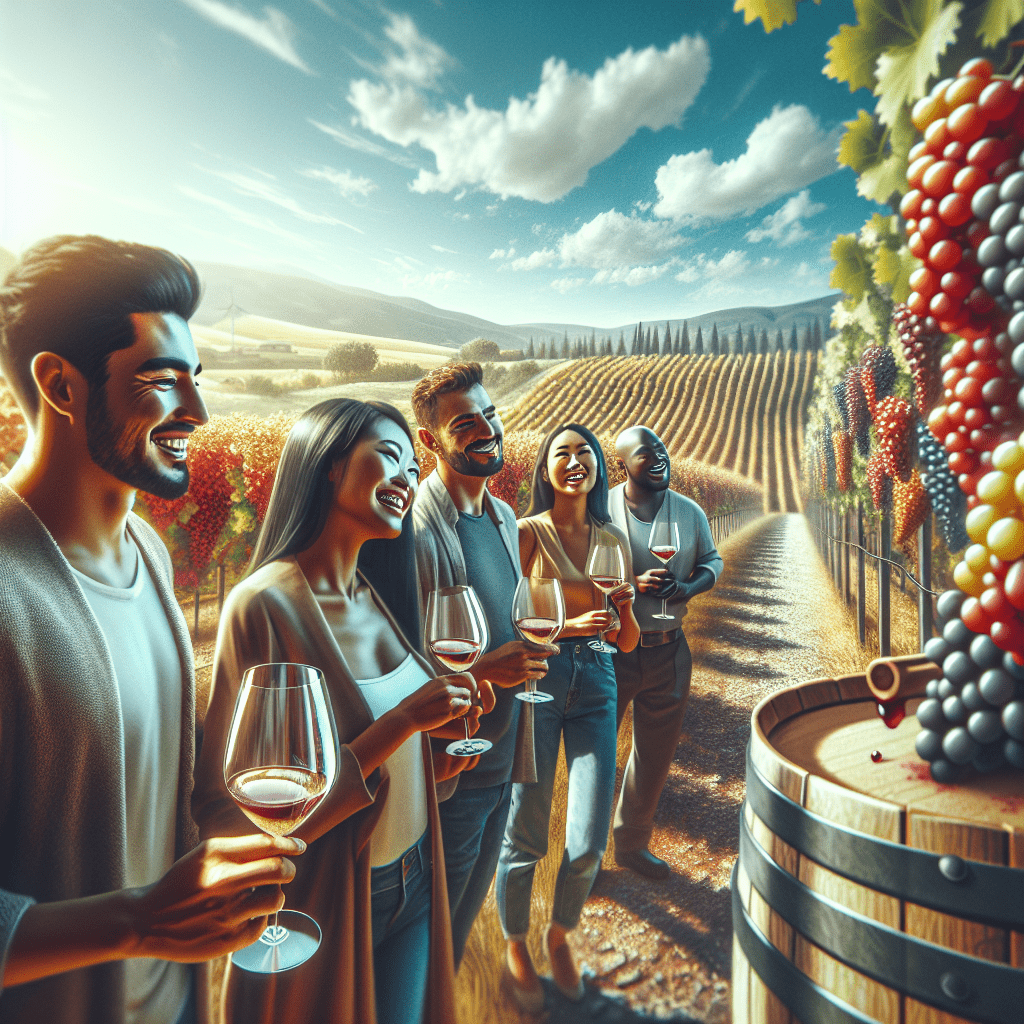Imaginably painting an allure of rolling vineyards, world-class wines, and balmy Californian sunsets, Napa Valley has earned its worldwide acclaim as one of the most exquisite and delightful destinations for wine lovers. Iconic for its specialty in Cabernet Sauvignon, the region boasts over 400 wineries, a testament to the diversity and excellence that can be found in every bottle. Spanning from the city of Napa in the south, the valley continues north for about 30 miles to Calistoga, creating a wide canvas for travelers to take an extensive tour and revel in the unique magic each winery offers.
Optimizing your experience, while seeking the best napa wine tours, however, all comes down to timing your visit just right. Napa Valley’s Mediterranean climate with warm, dry summers, and cool, wet winters, coupled with the valley’s unique geographical attributes, yield a viticulture cycle that is as fascinating as it is rewarding to those who keenly follow it. Year-round, the valley is a spectacle, but each season brings its unique offerings, and understanding this can enrich your tour experience immeasurably.
To get the most of Napa Valley’s viticulture, let’s take a brief glimpse into its yearly cycle. The year starts with winter pruning, preparing the groundwork for spring growth. Soon after, bud break marks the start of a new growth cycle and by late spring and progressing into summer, flowering occurs. Come fall, and the valley bursts into a colorful blend of yellow, orange, and red for the mid-August to October harvest season.:
Hence, knowing what each month offers can be instrumental in tailoring your Napa wine tour to best suit your specific needs and desires. The decision ultimately rests on whether you prefer the vibrant, upbeat atmosphere of the harvest, or the tranquillity and intimacy of other seasons. Or perhaps your tour is centered around different wine tasting excursions, winery experiences or Sonoma vineyard tours. Regardless, a carefully planned, well-timed visit can intensify your immersion into the Napa winery, vineyard, and wine tasting scene.
Not merely another wine region, Napa Valley remains a coveted destination for its stunning scenery, luxury winery tours, world-class restaurants, and most importantly – its extraordinary wines. But to capture this magic, it’s indispensable to understand the importance of timing your visit. In essence, the climatic conditions, coupled with the Napa viticulture cycle, contribute to the overall wine tour experience, and hence, understanding this cycle empowers you to pinpoint the absolute best time for your visit.

Detailing the yearly viticulture calendar in Napa Valley
Winter Season
The winter season in Napa Valley, broadly spanning December through February, is characterized by calm and solitude. It’s a time when the vineyards lay dormant, and rain clouds often grace the sky, offering a naturally refreshing ambience to those seeking a serene atmosphere during their Napa wine trip. The weather hovers around 40-60°F, and the tourist crowd is at its thinnest, allowing for an intimate interaction with the region’s unique charm.
During winter, the vineyard activities are relatively quiet; vines are in a state of slumber, storing nutrients and energy for the coming growing season. Pruning is the key task during these months, setting the stage for spring growth. Pruning is a meticulous craft, involving selective cutting to influence the vine’s productivity for the coming season, an intriguing process for wine enthusiasts. Besides, the majority of Napa Valley wineries remain operational year-round with indoor tastings, providing an exclusive winery tour experience.
The pros of a winter visit include fewer crowds, lower tasting fees, and the chance to embark on private Napa wine tours without having to jostle with throngs of tourists. However, the cons revolve around the weather. While it provides a scenic beauty, the winter rain could interfere with outdoor activities. Furthermore, if you’re particularly interested in witnessing the vineyard in full bloom or the grape-harvesting process, winter would not be an ideal time for your visit.
Spring Season
Spring is a season of new beginnings; buds bloom, and fresh leaves appear, signaling the start of the grape-growing season. Generally, extending from March to May, spring in Napa Valley is a spectacle to behold. Quality-conscious vineyard workers often engage in meticulous canopy management during this time, which has a significant influence on the eventual wine quality.
Tourists visiting in spring are sure to enjoy the ambiance of lush, green vineyards that make a striking contrast with the flowering mustard plants. The daily temperature is generally mild, largely lying in the range of 50-70°F. Wine tasting excursions during spring provide an excellent opportunity to witness bud break, the first stage of the grape cycle, in which small buds on the vine start to swell and eventually burst into tiny leaves.
Pros of a spring visit in Napa Valley include the beautiful weather, vibrant spring scenery, and the opportunity to witness the start of the grape-growing season. The cons, however, focus on certain vineyard operations and luxury Napa winery tours that might not be fully operational until late spring or early summer. So, if you’re looking at specialized wine-related activities like grape stomping or harvest parties, spring might leave you wanting.
Summer Season
Summers in Napa Valley, which span June through August, are famous for their warm, dry days (75-85°F), and cooler evenings — a pleasing contrast that lends an exceptional charm to wine country. The popularity of summer often means an influx of tourists there for a wine tasting tour, making it the busiest season in the valley.
During these hot months, the vines progress from flowering to fruit set, and the vineyards are abuzz with activities centered around ensuring an optimum grape yield. Rapid vine growth marks the summer season, and so does the critical task of canopy management to ensure just the right amount of sunlight and air penetrates the vines.
One of the primary advantages of summer visit is the chance to witness the lively activity in vineyards, full bloom vineyards, and summer events hosted by various wineries. The biggest con, however, could be dealing with large crowds and higher prices, particularly for accommodations and guided wine tours Napa. Nevertheless, it’s a gratifying experience for any wine lover to explore the Californian wine tours amidst summer’s vibrancy.

Focusing on the Autumn Harvest Season
Description of Napa Valley’s autumn aura and tourism peak
As summer gives its way to autumn, the verdant landscape of the Napa Valley bears witness to a miraculous shift. The onset of fall around mid-September ignites the charm of the region, painting the vineyards all shades of orange, gold, and crimson. This is coupled with a characteristic cooling in temperature, keeping the days pleasant (65-80°F) and nights cooler, offering a serene ambiance for wine enthusiasts on a Napa wine trip.
Autumn ushers in the annual grape harvest, which is notably the busiest time for vineyards, with a dynamic flurry of activities taking place. From the crack of dawn until the sun sets, you can see workers in the vineyards engaged in picking and sorting grapes, and wineries vibrating with the sounds of the crush. A visit to Napa Valley during the harvest season not only allows one to witness these activities, which largely dictate the wine quality, but also gives a chance to be part of the harvest excitement that proliferates across the wine country.
Autumn, though an attractive season to visit, does bring in some downsides. Due to the popularity of the season, the Valley draws in extensive crowds, leading to packed wine tours and higher prices. Nevertheless, the advantages strongly outweigh the disadvantages, with the enchantment of the harvest ambience and countless opportunities to engage in a Napa wine tasting tour being the highlights.
Deep diving into the harvesting technique
Harvesting technique and timing form the quintessence of the Napa wine experience and significantly reflects the resultant wine’s quality. Generally, mid-August to October is considered the grape harvest season, also known as ‘crush’, but the exact timing depends on various factors, including grape varietal, weather patterns, and the winemaker’s judgment. The quest for an optimal balance between grape acidity and sweetness largely determines the harvesting moment.
Visitors during the harvest season often get a first-hand account of this crucial phase, with some wineries even allowing tourists to participate in the wine grape harvest. Its not only a fantastic opportunity for an intimate Napa winery experience but also a chance to rub shoulders with the winemakers themselves, picking up insightful details about various facets of grape growing and harvesting.
The harvest season is also the perfect period to explore luxury Napa winery tours or embark on wine tasting excursions. The fall harvest has a distinctive charm which amplifies the overall winery visit experience for the oenophile.
Napa Valley wineries’ exclusive events
Autumn in Napa Valley is not only about grape harvest, but it’s also about celebrating the wine that inspires so many to visit the region. A range of harvest festivals and exclusive winery events take place during this season, attracting both locals and tourists alike. Many wineries organize grape stomp parties, harvest galas, wine release parties, and even private Napa wine tours — each event contributing to the festive spirit of this season.
These events offer excellent interaction opportunities for tourists. Not only can they engage with winemakers and vineyard owners, but they can also seize the chance to learn more about the practical aspects of winemaking. Whether it’s the crush process or the fermenting details, these harvest events are both education and entertainment.
The impact of these events on the overall wine tour experience is profound. From tasting the fresh produce to witnessing the vineyard operations during an important season to participating in fun-filled harvest events, Napa Valley leaves no stone unturned in ensuring a perfect wine country experience during the harvest season.

Comparing different months for Napa wine tours
Highlights of each season to aid decision
The allure of Napa Valley changes with the turn of every season, and so does the experience it offers. Winter draws out the quieter side of the valley, providing a serene backdrop for a California wine tour. While vineyard activities may be at a minimum, the potential for cozy wine tastings in less crowded wineries reaches its peak.
If you embark on a Napa wine trip in spring, you’ll be greeted by vivid hues of green as the region awakens from its winter slumber. This period marks the start of a new grape cycle, and for the keen-eyed visitor, witnessing the arrival of new leaves offers a unique Napa winery experience.
Summers usher in filled vineyards, warm weather, and incessantly bustling activities in the vineyard. It’s brimming with life and makes for immersive participation in the myriad wine-related activities that occur throughout the season. Sonoma vineyard tours and exclusive winery tours Napa gain traction during this period, and there’s no denying the excitement in the air is contagious.
However, if you wish to experience the harvest season live in action, autumn should be your go-to. Napa is ablaze with color, the grapes are ripe, and the air is filled with anticipation. Wine festivals and private Napa wine tours light up the days, with the valley’s wine culture dutifully exhibited.
Overview of costs associated with each season
While the experiences that you can expect during your visit to the Napa Valley will undoubtedly vary depending on the season, so will the costs. The winter months are often quite affordable in terms of accommodation and wine tasting tour fees, related largely to lowered tourism demand. The spring comes with mild increases but nothing too significant. Summer kicks in with the highest price points, as it’s considered the peak tourist season, with the rates often seen dripping into the early fall.
The costs associated can also depend significantly on personal preferences and activities you choose to partake in. If you’re looking for luxury Napa winery tours or gourmet wine tours Napa, be prepared to budget extra. Regardless of the season you choose, it’s invariably best to plan your budget in advance, thereby ensuring an untroubled Napa wine tasting tour.
Personalizing Napa wine tour experience
While this guide gives you a comprehensive view of what to expect in different seasons, the Napa Valley wine trip you choose should ultimately resonate with your personal preferences. Discerning factors such as your affinity to certain weather conditions, tolerance for tourist crowds or interest in wine harvest festivals can heavily influence your experience.
Your research on Napa Valley wineries, Sonoma vineyard tours, or private Napa wine tours can add a touch of personalization, ensuring your wine tour to be much more than a touristy escapade. Be it joining an exclusive winery tour or simply feeling the rush of harvest celebrations; fine-tuning your experience based on personal preferences could elevate your wine tour to instigate memories that you’ll cherish for a lifetime.

Wrapping Up Your Wine Country Adventure
No matter what time of year you plan your visit, the rolling vineyards of Napa Valley retain a timeless charm that is distinctive yet beautifully cyclic with the seasons. Whether it’s the tranquil serenity of winter, the vibrant awakening of spring, the bustling vitality of summer, or the fervor and color that autumn brings, each season has its distinct allure. This is a testament to the essence of Napa Valley – the way it can morph and provide unique experiences throughout the year, each season offering its tapestry of scenic vineyards, outstanding wines, and unforgettable adventures.
The importance of careful planning and selecting the best time to visit based on your personal preferences and interests cannot be overstated. It’s about defining what a Napa wine trip means to you, be it a winter retreat to gaze upon the dew-kissed vineyards stripped of their leaves, a spring getaway to witness a fresh cycle in viticulture, a summer adventure filled with wine tasting excursions, or an autumn joyride to partake in the much-revered harvest season. The intricacy of wine-making procedures during certain seasons and the lively events held by Napa Valley wineries punctuate the undying lure of an exclusive Napa winery experience.
In conclusion, while it’s vital to consider the seasonal variations in weather, the extent of tourist crowds, and costs associated with each season while planning a Napa Valley wine tour, no single factor should overpower your personal preference. After all, wine has always been about personal taste, and it’s only fitting that you choose a season that best suits your palate. In Napa Valley, the promise stands that no matter when you choose to visit, you’ll be met with an enchanting blend of world-class wines, picturesque vineyards, and an unshakeable dedication to the mastery of viticulture. Every season is a testament to their commitment to the craft, and there’s no wrong time to experience the charm of the Napa Valley wine country. For more info, please give Joy a call for a Wine Tasting Tour. 707-227-7323. napawinetoursbyjoy.com

